Kanji Vada is a popular winter time dish in Rajasthan that promotes good gut health and improves digestion. It has two elements: the fermented and probiotic-rich mustard-flavoured water called Kanji and the Moong Dal (and/or Udad Dal) Vada.
My friend, Kiran Jalan, taught me how to make this dish. It all started when she sent me some delicious Kanji Vada a few weeks ago, and my family fell in love with it. Then, of course, I asked her for the recipe and tried it with great results. Thank you, Kiran, for the warm and generous person you are. 🙂
More About Kanji Vada
- The Kanji (also know as Rai ka Paani) that is a fermented liquid made of water flavoured with 2 types of mustard, red chilli powder, black salt, regular salt, turmeric and asafoetida. It is then fermented for 2 to 3 days.
- You can make a large batch of Kanji and refrigerate it for use over a few days.
- The vadas can be made of moong dal (as I did), udad dal or a mix of both the dals. For moong dal, about 1 hour of soaking is enough. However, if you are using udad dal, you have to soak it for at least 6 hours.
- Some people add wheat flour to the dal batter to get a firmer dough that can be shaped into discs. However, I did not do this and shaped the vadas into balls.
Some Other Rajasthani Recipes
- Jaisalmeri Kala Chana Kadhi (No Onion, No Garlic Recipe)
- Rajasthani Kacchi Haldi ki Sabzi | Fresh Turmeric Root and Peas Curry
- Masala Bajra Khichdi (Bajre ki Khichdi)

How to Make Kanji Vada
Making the Kanji
-
- Boil 1.5 litre water and cool it till it is lukewarm.

- To a glass jar or a steel vessel, add 2 tbsp yellow mustard powder, 1 tbsp black mustard powder, 1 tsp red chilli powder, 1.5 tsp black salt, 1.5 tsp regular salt, 1/4 tsp turmeric powder, and 1/4 tsp asafoetida.
- Now, add the boiled and cooled water, and mix well. The water should be salty, so add more salt, if needed.


- Cover and set aside for 3 days to ferment. Mix with a dry spoon once or twice a day. In addition, keep in sunlight for about 1-2 hours a day to speed up the fermenting.

- After the 3rd day, refrigerate the Kanji if you are not using it immediately.
- Boil 1.5 litre water and cool it till it is lukewarm.
Making the Moong Dal Vada Batter (On the 3rd day or whenever you want to eat the Kanji Vada)
-
- Wash 1 cup of Moong Dal well under running water and then soak it in 3 cups of water for at least 1 hour. I soaked it for 2 hours.

- After the dal is soaked, drain all the water from it.

- Next, rush 1 tsp coriander seeds just enough to break them.

- Grind the soaked dal, 2 chopped green chillies, and 1″ piece on ginger (chopped to pieces) to a coarse paste without adding any water. The batter should be thick and not fall off the spoon easily.


- Transfer the ground dal paste to a bowl, and add 1/2 tsp red chilli powder, the crushed coriander seeds, 3 tbsp finely chopped coriander leaves, and some salt.
- Using a spoon, mix well in one direction for 5 minutes. This aerates the batter and makes the vadas soft.

- Set aside for 5 minutes.
- Wash 1 cup of Moong Dal well under running water and then soak it in 3 cups of water for at least 1 hour. I soaked it for 2 hours.
Frying the Vadas
-
- While the batter is resting, dissolve about 1 tsp salt in 1.5 litres water, and set aside.

- In a small kadai, over medium flame, heat 1 cup oil.
- To test if the oil is hot enough, add a small pinch of the vada batter to the oil. The batter ball should sink to the bottom and then slowly rise to the top and fry on the surface of the oil.

- Now add small dollops of batter to the oil and fry the vadas till golden brown.

- Take the fried vadas out of the oil and drain any excess oil.

- Transfer the vadas to a plate to cool.

- Add the cooled vadas to the salted water and let them soak for 15 to 20 minutes.

- After the vadas have soaked, take them out of the water and squeeze them well to remove the water.

- Add the vadas to the Kanji and let them soak for 30 to 60 minutes.

- While the batter is resting, dissolve about 1 tsp salt in 1.5 litres water, and set aside.
- Serve Kanji Vada at room temperature.
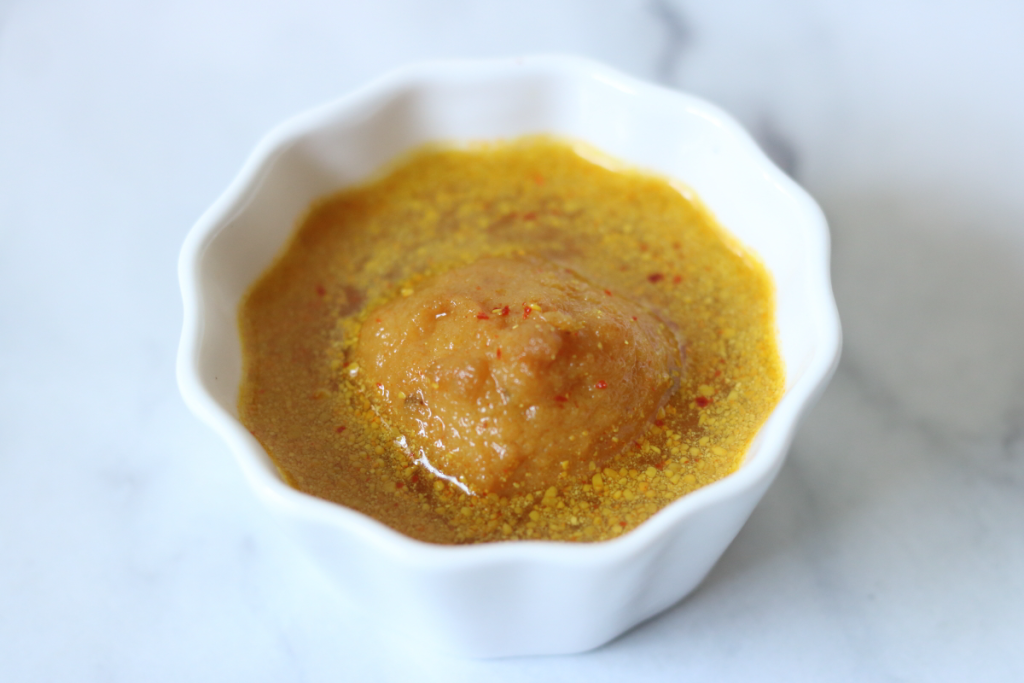
Recipe for the Rajasthani Kanji Vada
Kanji Vada: Probiotic Winter Recipe from Rajasthan
Kanji Vada is an iconic Rajasthani dish made in winters. The tangy Kanji is a fermented drink rich in probiotics that improve digestion. All you need to do to make Kanji is add 2 types of mustard powder, red chilli powder, asafoetida, turmeric and black salt to water and then ferment the liquid for for 2 to 3 days. Then make Moong Dal Vadas and soak them in Kanji before serving the two together. Health benefits aside, I love Kanji Vada is because it is delicious.
Equipment
- A steel vessel or glass jar with lid (2 litre capacity)
- Vessel (1.5 litre capacity)
- Ladle
- Small Kadai
- Slotted Ladle
- Plate
Ingredients
For the Kanji
- 1.5 Litres Water
- 3 tbsp Yellow Mustard (Powdered)
- 1 tbsp Black Mustard (Powdered)
- 1 tsp Red Chilli Powder
- 1.5 tsp Black Salt
- 1.5 tsp Salt
- 1/2 tsp Turmeric
- 1/4 tsp Asafoetida
For the Moong Dal Vada
- 1 Cup Moong Dal
- 2-3 Green Chillies (Chopped to pieces)
- 1" Ginger (Chopped to pieces)
- 1/2 tsp Red Chilli Powder
- 1 tsp Coriander Seeds
- 3 tbsp Coriander Leaves
- Salt to Taste
For Frying
- 1 Cup Oil
Instructions
Making Kanji
- Boil 1.5 litre water and let it cool till it is lukewarm. You can also directly use lukewarm filtered water.
- To a glass jar or a steel vessel, add 2 tbsp yellow mustard powder, 1 tbsp black mustard powder, 1 tsp red chilli powder, 1.5 tsp black salt, 1.5 tsp regular salt, 1/4 tsp turmeric powder, and 1/4 tsp asafoetida.
- Add the boiled and cooled water, and mix well.Note: The water should be salty, so add more salt, if needed.
- Cover and set aside for 3 days to ferment.Mix with a dry spoon once or twice a day. Keep in sunlight for about 1-2 hours a day to speed up the fermenting.
- After the 3rd day, refrigerate the Kanji if you are not using it immediately.
Making the Moong Dal Vada Batter (On the 3rd day or whenever you want to eat the Kanji Vada)
- Wash 1 cup of Moong Dal well under running water and then soak it in 3 cups of water for at least 1 hour. I soaked it for 2 hours.
- After the dal is soaked, drain all the water from it and set aside.
- Crush 1 tsp coriander seeds just enough to break them.
- Now grind the soaked dal, 2 chopped green chillies, and 1" piece on ginger (chopped to pieces) to a coarse paste. Note: Do not add water while grinding the batter. The batter should be thick and not fall off the spoon easily.
- Transfer the ground dal paste to a bowl, and add 1/2 tsp red chilli powder, the crushed coriander seeds, 2 tbsp finely chopped coriander leaves, and some salt.
- Using a spoon, mix well in one direction for 5 minutes. This aerates the batter well and makes the vadas soft.
- Set aside for 5 minutes.
Making the Vadas
- While the batter is resting, dissolve about 1 tsp salt in 1.5 litres water, and set aside.
- In a small kadai, over medium flame, heat 1 cup oil.
- To test if the oil is hot enough, add a small pinch of the vada batter to the oil. The batter ball should sink to the bottom and then slowly rise to the top and fry on the surface of the oil.
- Now add small dollops of batter to the oil and fry the vadas till golden brown.
- Take the fried vadas out of the oil and drain any excess oil, and transfer them to a plate to cool.
- Transfer the vadas to a plate to cool.
- After the vadas cool a bit, add them to the salted water and let them soak for 15 to 20 minutes.
- After the vadas have soaked, take them out of the water and squeeze them well to remove the water.
- Add the vadas to the Kanji and let them soak for 30 to 60 minutes.
- Serve Kanji Vada at room temperature.
Notes
- You can add wheat flour to the moong dal vada batter to make it a very soft dough and then shape the vadas into discs.
- You can make plenty of Kanji and refrigerate it for a couple of weeks. Make vadas and and when needed.
Nutrition
Calories: 169 kcalCarbohydrates: 18 gProtein: 7 gFat: 8 gSaturated Fat: 1 gPolyunsaturated Fat: 2 gMonounsaturated Fat: 5 gTrans Fat: 0.03 gSodium: 1140 mgPotassium: 37 mgFiber: 4 gSugar: 1 gVitamin A: 176 IUVitamin C: 2 mgCalcium: 27 mgIron: 1 mg


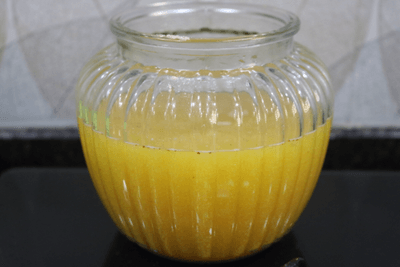
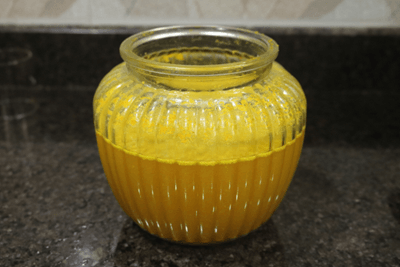
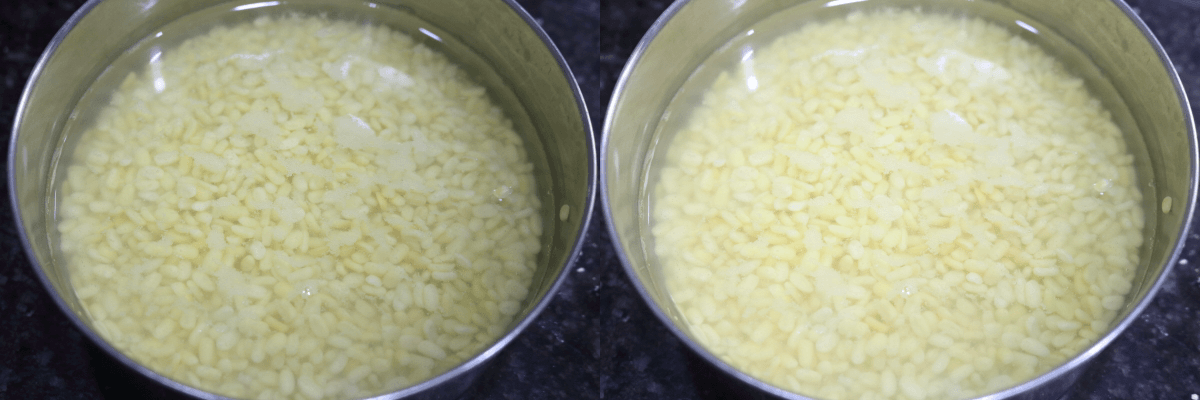
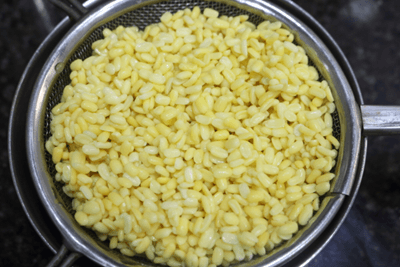

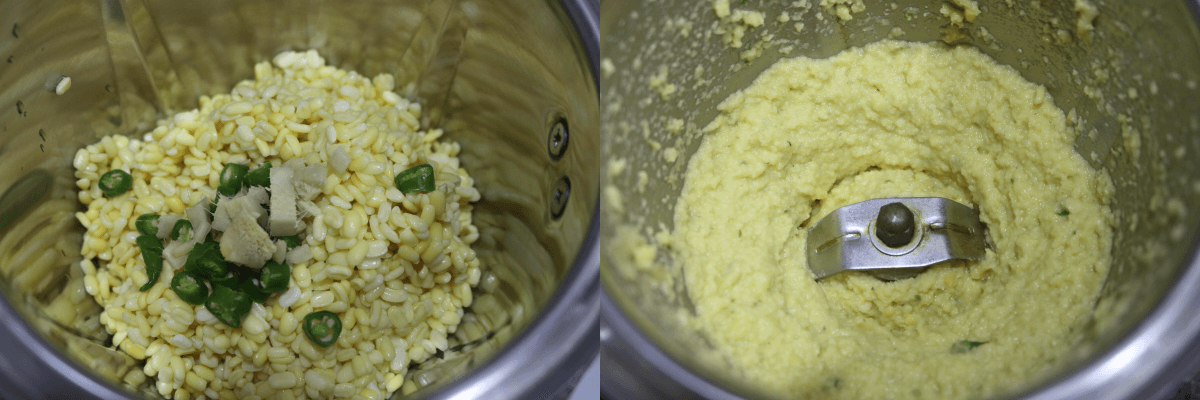
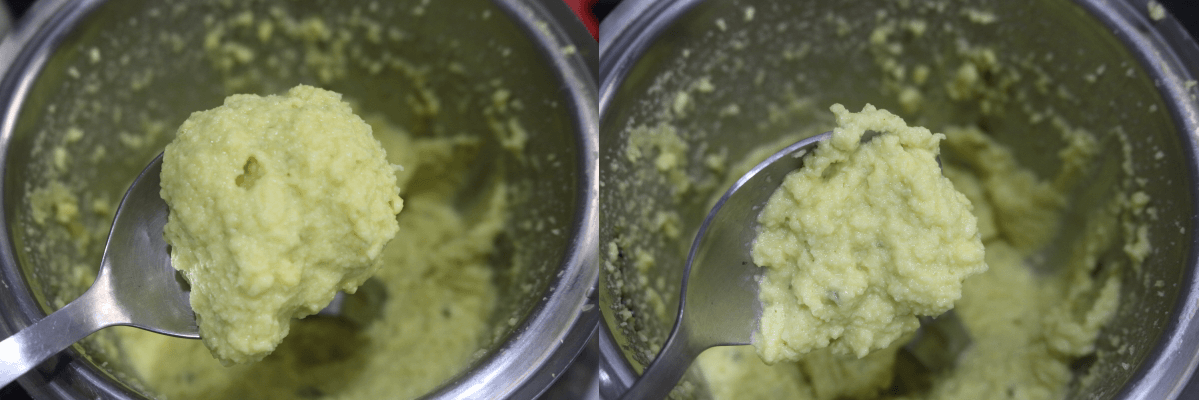
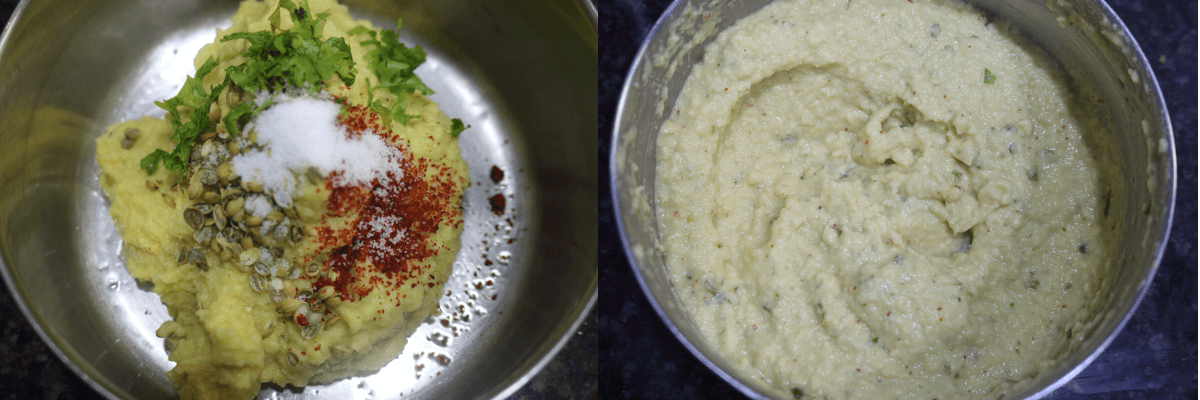
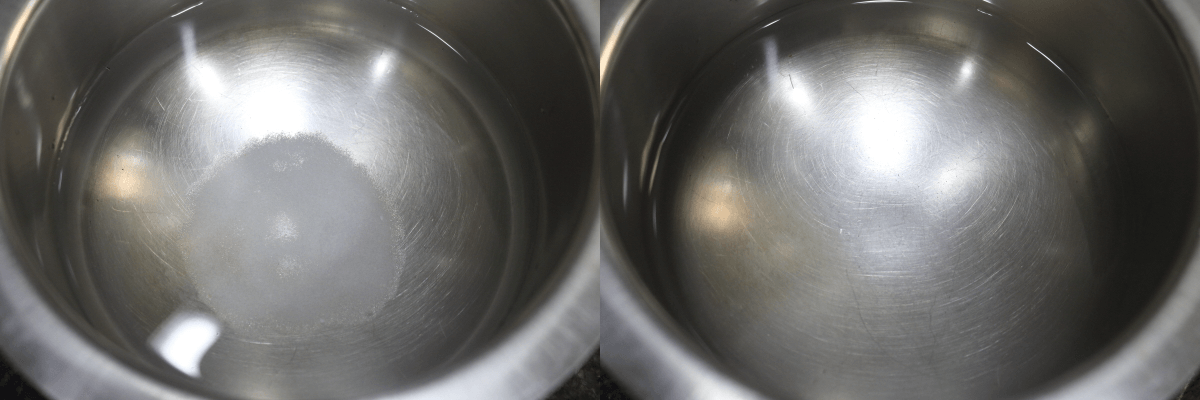
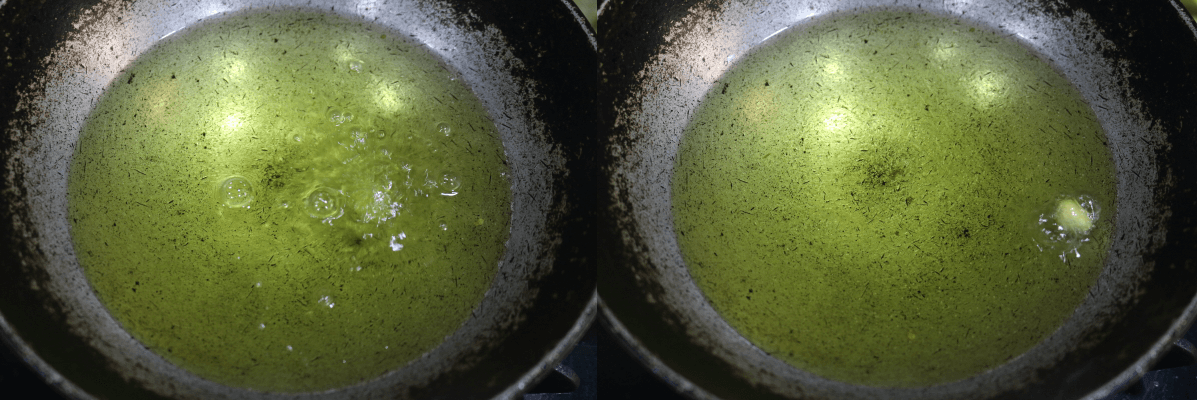
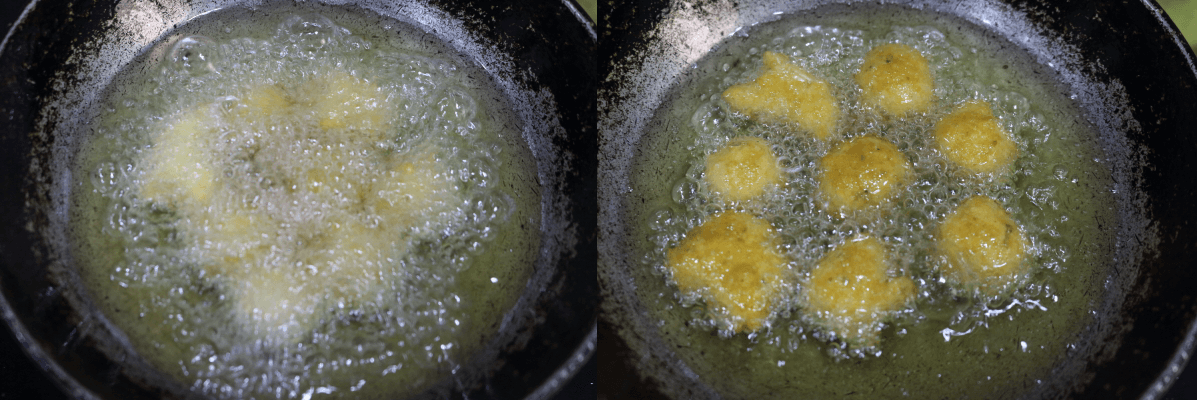


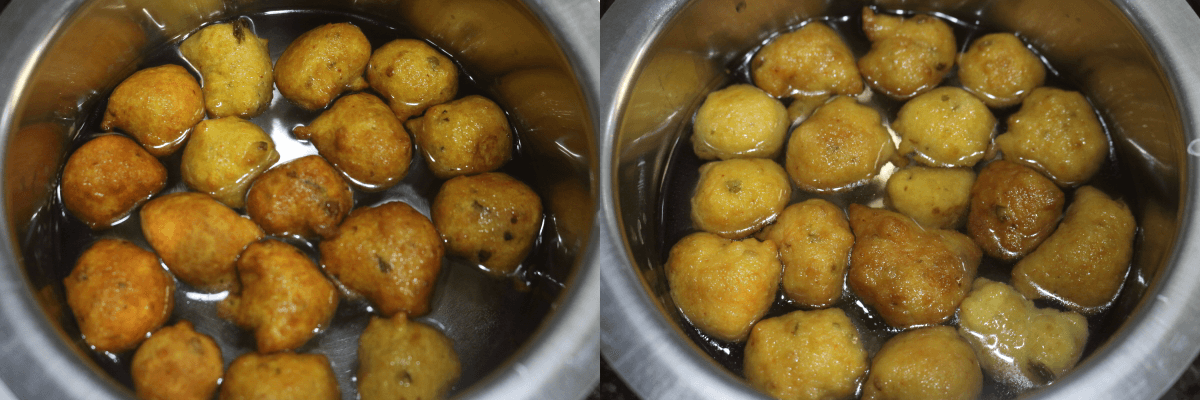

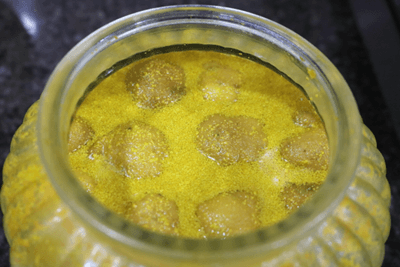
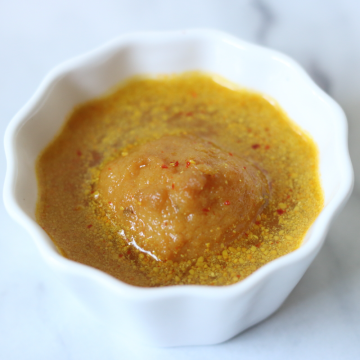

Leave a Reply